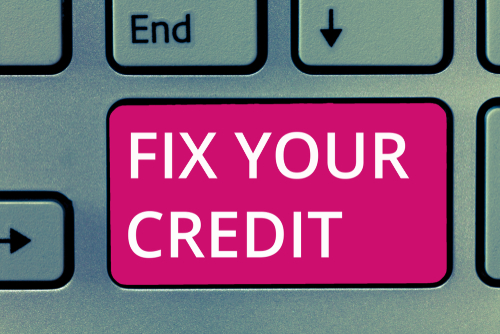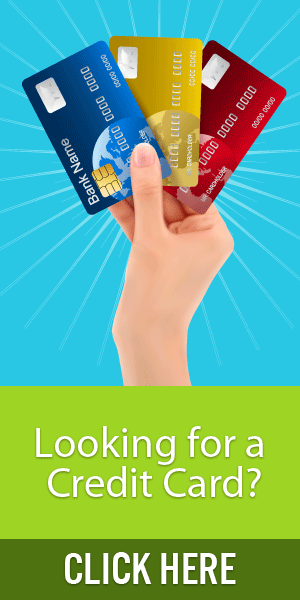Having adversarial credit score could possibly be a troublesome experience.
Together with getting mortgage capabilities declined, not having a financial institution card, unable to get a mortgage, it merely downright feels harmful.
The reply is DIY credit score rating restore.
Fortunately, once you may need adversarial credit score you may need quite a lot of decisions. It is pretty potential to boost your credit score rating ranking, it merely takes some time and effort.
On this text, I’m going to stipulate step-by-step learn how to get started with enhancing your credit score rating ranking.
5 Steps To DIY Credit score rating Restore
Repairing your credit score rating might be easy for many who observe these 5 easy steps.
I developed these steps after serving to 1000’s of people improve their credit score rating over the earlier 7 years. That’s fingers down the quickest technique to revive your particular person credit score rating.
Once you’ve acquired any questions the least bit about any of my steps, be at liberty to ask me. I try to reply as shortly as I can!
Step 1. Start Monitoring Your Credit score rating Score Month-to-month
Don’t, don’t, don’t skip this step! It’s time to start out out paying attention to your credit score rating ranking!
That’s terribly important as the 1st step on account of the next steps will set off your credit score rating ranking to drastically change over the following couple of months and you need to be watching your progress.
In fact, you may most certainly revenue from signing up with a credit score rating monitoring service.
The reason being is on account of all by the credit score rating enchancment course of, your ranking goes to be frequently altering and in addition you’ll should hold watch over it.
I wish to advocate monitoring your credit score rating with the Transunion 3-Bureau credit score rating monitoring service.
Examine Further about Transunion
Step 2. Rebuild Your Credit score rating with a Secured Credit score rating Card
The solely, solely technique to rebuild credit score rating is to get new, good credit score rating.
Because you proceed to have adversarial credit score, you gained’t have the power to get authorised for a critical unsecured financial institution card (however). Chances are you’ll nonetheless get authorised for a secured financial institution card and it’s going to be reported as constructive credit score rating in your credit score rating report.
A secured card is like an unsecured card in that it will report again to the credit score rating bureaus.
The excellence is that you need to secure the cardboard by depositing the credit score rating limit into an account.
After getting executed this, take a look at your credit score rating report (that’s the place the credit score rating monitoring is important) to see how your ranking has modified.
Once you’ve had a secured financial institution card for quite a lot of months and assemble a constructive credit score rating historic previous, you possibly can start looking at making use of for an unsecured card and this will likely extra improve your credit score rating ranking.
I wish to advocate opening a Primor Mastercard Secured Credit score rating Card to get started with.
Examine Further regarding the Primor Card
Step 3. Start Paying Down Your Debt
Now that you just’re developing new good credit score rating, the next step is to pay down your debt. Start alongside along with your smallest cash owed and switch to the bigger cash owed.
This makes it so much easier to stick with it. The a lot much less debt you may need (considerably financial institution card debt), the upper your credit score rating ranking will seemingly be.
Moreover, it is advisable to ponder debt assist.
Step 4. Take away Damaging Objects On Your Credit score rating Report
Alongside along with your credit score rating report in hand, you need to endure and set up the detrimental entries. These detrimental devices might embrace the subsequent points.
- Late funds
- Collections
- Value offs
- Foreclosures
- Repossessions
- Tax Liens
- Bankruptcies
This step is doubtless some of the important, nonetheless it’s moreover one of many powerful steps. You will need to start by sending your collectors goodwill letters.
Or, for many who’re the form of one that may comparatively have educated take care of it and easily be executed with the whole factor, I like to recommend you check out Lexington Regulation Credit score rating Restore. They’ll take care of you.
Examine Further about Lex Regulation
Step 5. Apply for a Most important Credit score rating Card
Your freeway to raised credit score rating is kind of full. The final word step is to make use of for a critical financial institution card. This may current lenders you’re ready to attain their perception, and it will moreover improve your credit score rating ranking.
Properly Completed!
Related posts
Subscribe
* You will receive the latest news and updates on your favorite celebrities!
Recent Posts
- How To Take away A Chapter From Your Credit score rating Report
- Strategies to Improve Your Credit score rating Score by 100 Components FAST
- The way in which to Take away Value Offs From Your Credit score rating Report
- 3 Strategies to Take away a Foreclosures From Your Credit score rating Report
- Assured Unsecured Credit score rating Taking part in playing cards for People with Harmful Credit score rating


